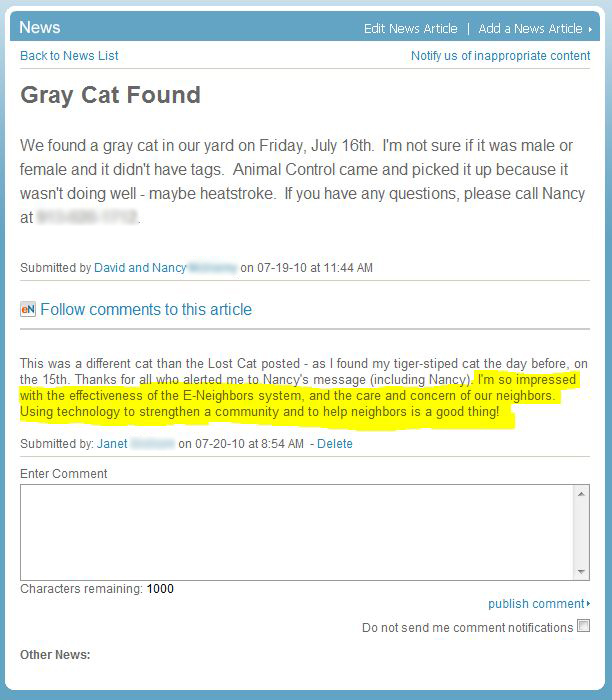In April I posted an article about content moderation, a feature of our website that allows a board member to review information posted by residents before it is published on the website. In it, I recommend that board members do not utilize this feature and allow residents to freely communicate, so long as no one is violating the Terms of Use or the law.
As a follow up to that post, I would like to provide board members with an alternative to content moderation in this post.
The video below is titled “How social media can make history” and it is 15 minutes and 48 seconds long. If you don’t have time to watch the whole thing, scroll forward to 12:27 into the video for the relevant part where Clay Shirky shares a story about MyBo.com, the social networking site that the Obama Campaign established during his campaign and how Barack Obama responded when the registered users of the site were not too happy with him about reversing his decision on the Foreign Intelligence Surveilance Act. He didn’t shut the site down, he didn’t make it harder to register, he didn’t moderate the content. Instead, he simply told them why he decided what he did and let them use the service to talk about it. The speaker in the video concludes with this statement:
“They [the Obama Campaign] had understood that their role with myBo.com was to convene their supporters, but not to control their supporters. And that is the kind of discipline that it takes to make really mature use of this media.”
The alternative to moderation or censorship is to operate transparently and openly by communicating. Let your residents know what you’re doing and why you’re doing it.
A partial transcript is provided below between 12:27 and 14:30:
“We saw some of the most imaginative use of social media during the Obama campaign. And I don’t mean most imaginative use in politics. I mean most imaginative use ever. And one of the things Obama did, was they famously, the Obama campaign did, was they famously put up MyBarackObama.com, myBO.com. And millions of citizens rushed in to participate and to try and figure out how to help. An incredible conversation sprung up there. And then, this time last year, Obama announced that he was going to change his vote on FISA, The Foreign Intelligence Surveillance Act. He had said, in January, that he would not sign a bill that granted telecom immunity for possibly warrantless spying on American persons. By the summer, in the middle of the general campaign, he said, “I’ve thought about the issue more. I’ve changed my mind. I’m going to vote for this bill.” And many of his own supporters on his own site went very publicly berserk. It was Senator Obama when they created it. They changed the name later. Please get FISA right. Within a day so of this group being created it was the fastest growing group on myBO.com. Within weeks of its being created it was the largest group. Obama had to issue a press release. He had to issue a reply. And he said essentially, “I have considered the issue. I understand where you are coming from. But having considered it all, I’m still going to vote the way I’m going to vote. But I wanted to reach out to you and say, I understand that you disagree with me, and I’m going to take my lumps on this one.” This didn’t please anybody. But then a funny thing happened in the conversation. People in that group realized that Obama had never shut them down. Nobody in the Obama campaign had ever tried to hide the group or make it harder to join, to deny its existence, to delete it, to take it off the site. They had understood that their role with myBo.com was to convene their supporters, but not to control their supporters. And that is the kind of discipline that it takes to make really mature use of this media.”
Please comment with your thoughts below. What are the benefits of moderation? What are the costs? How do you operate your neighborhood website and why?



